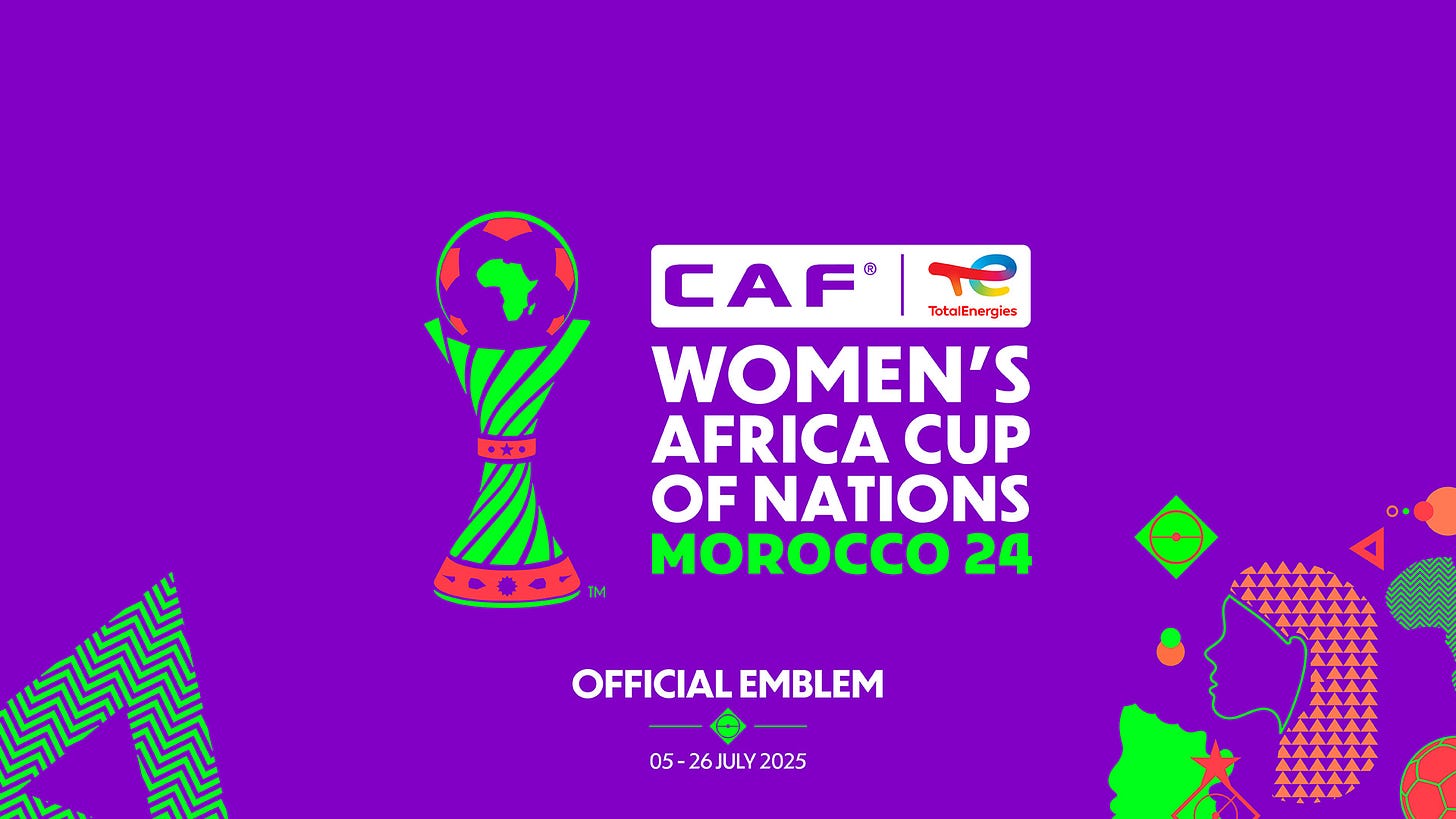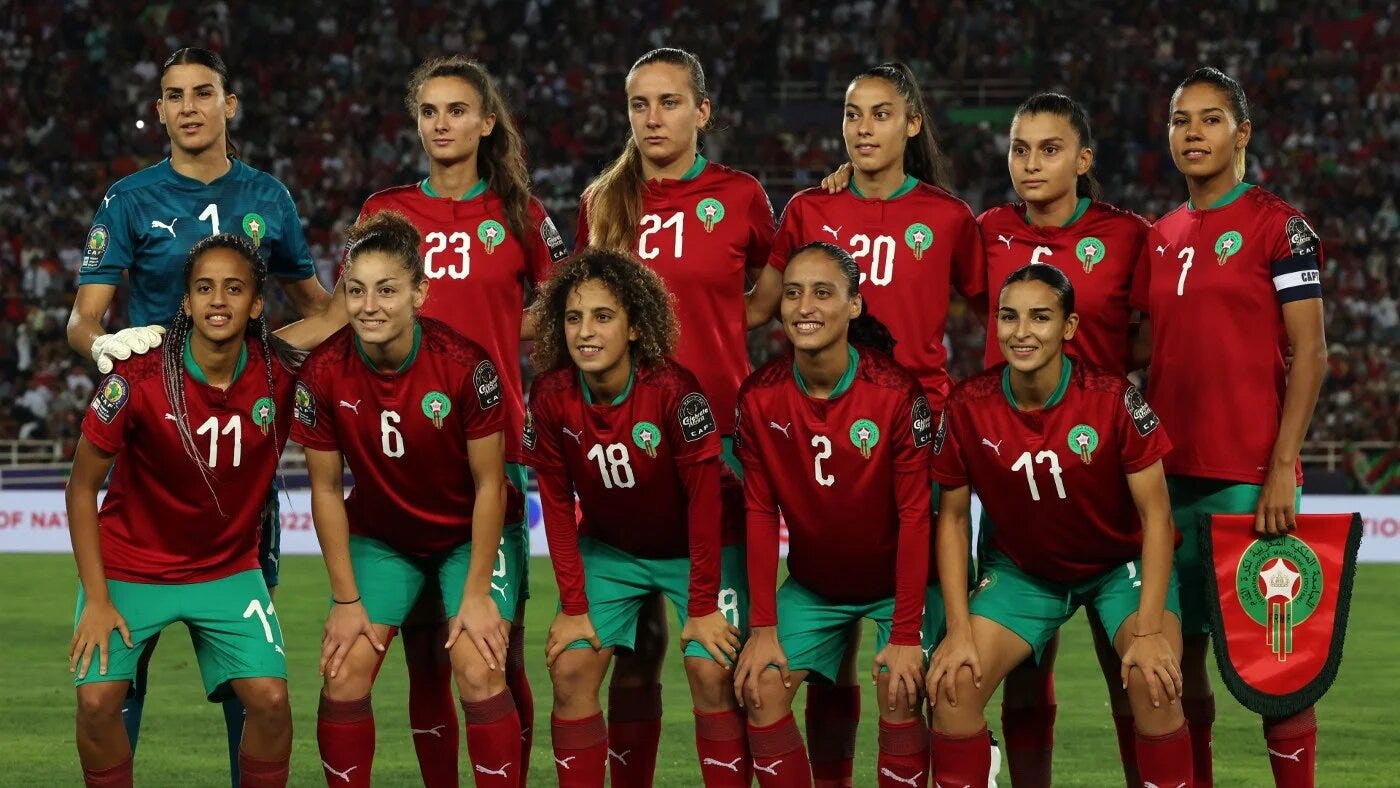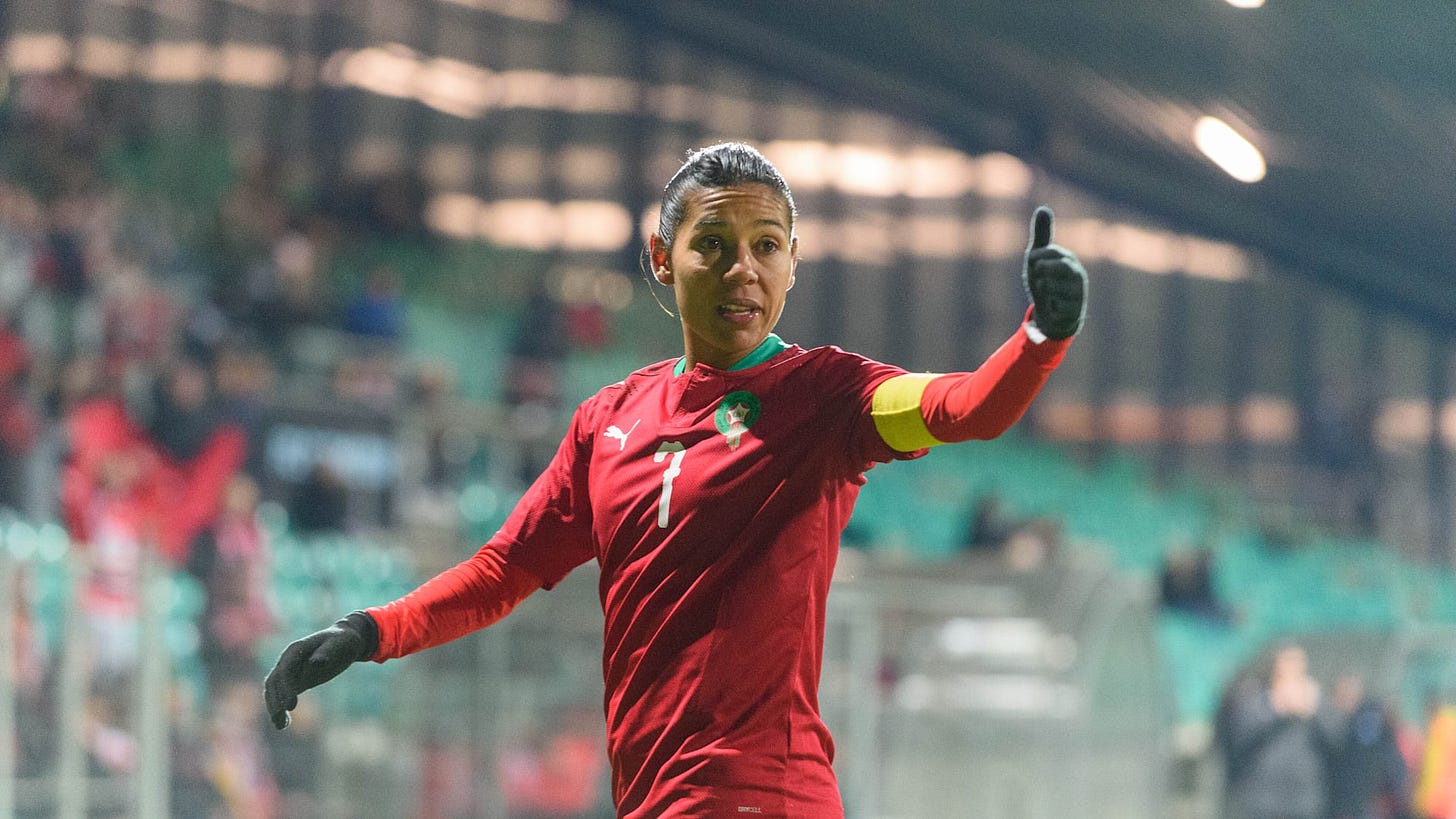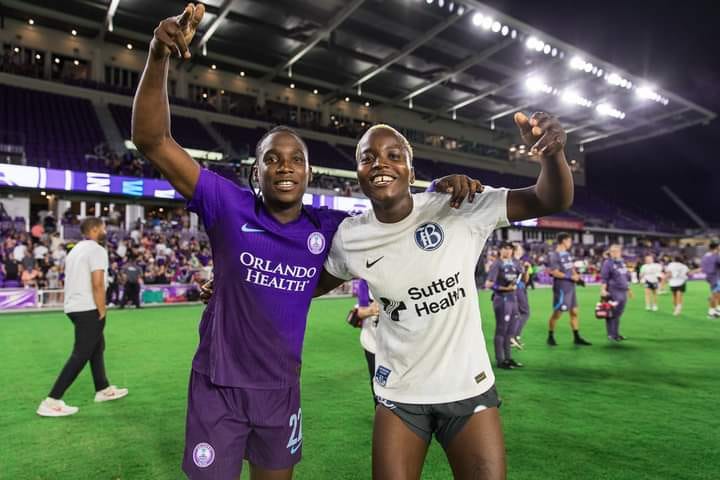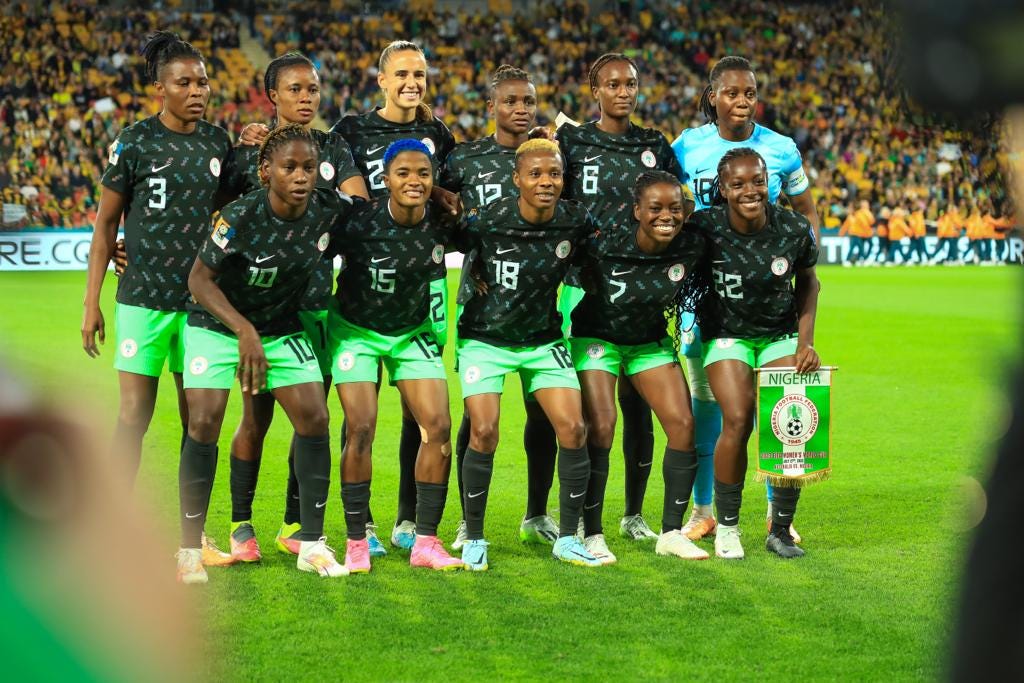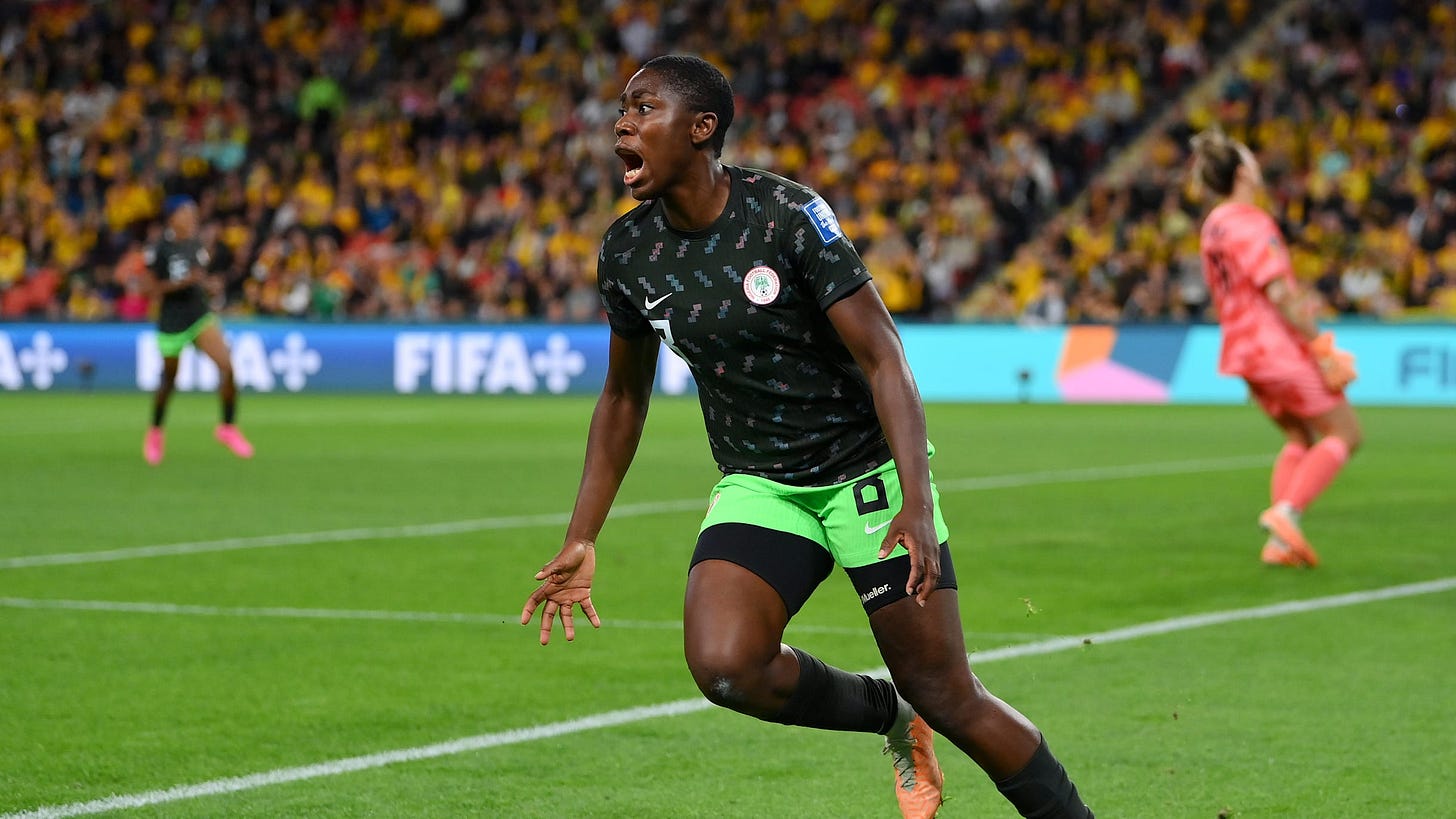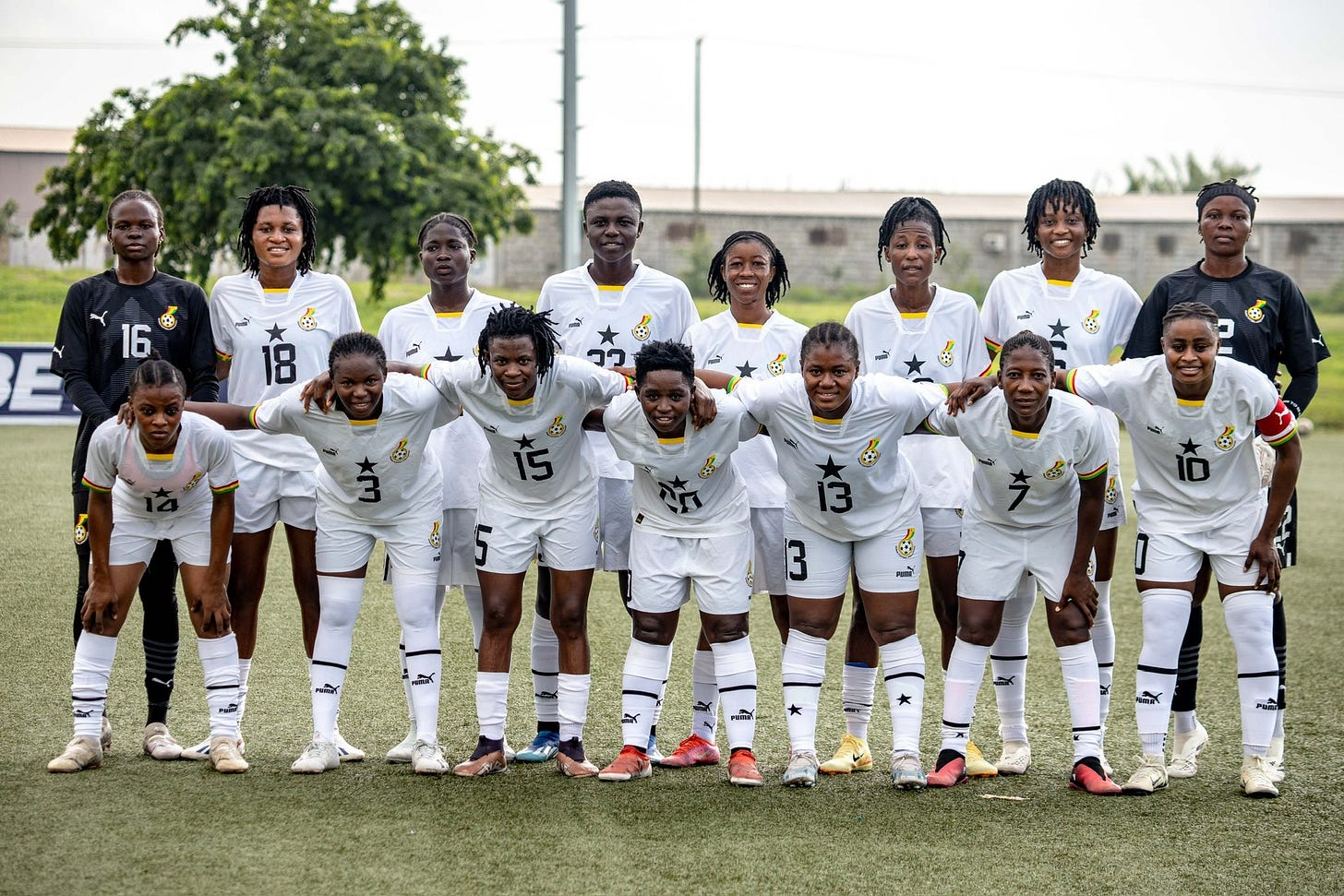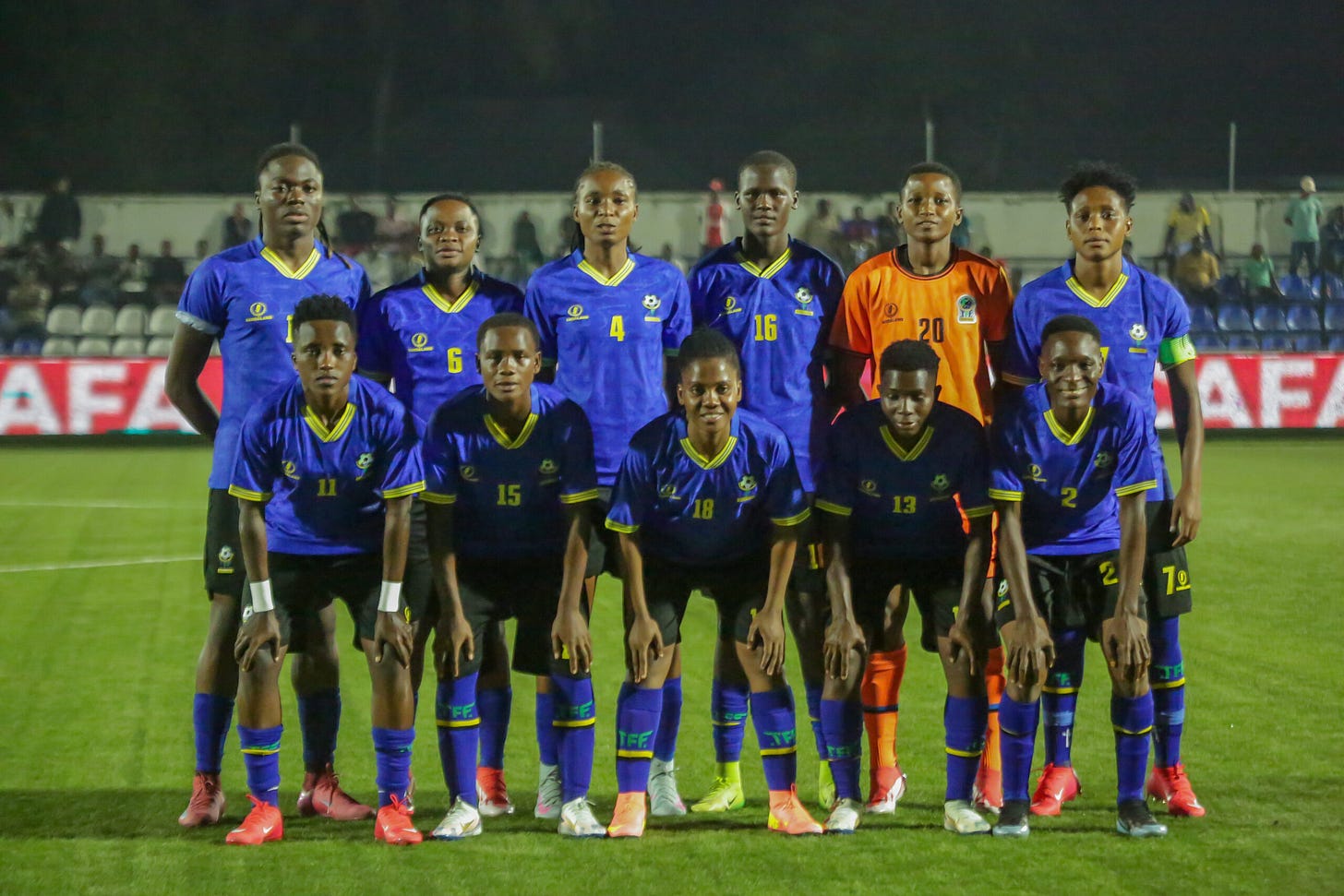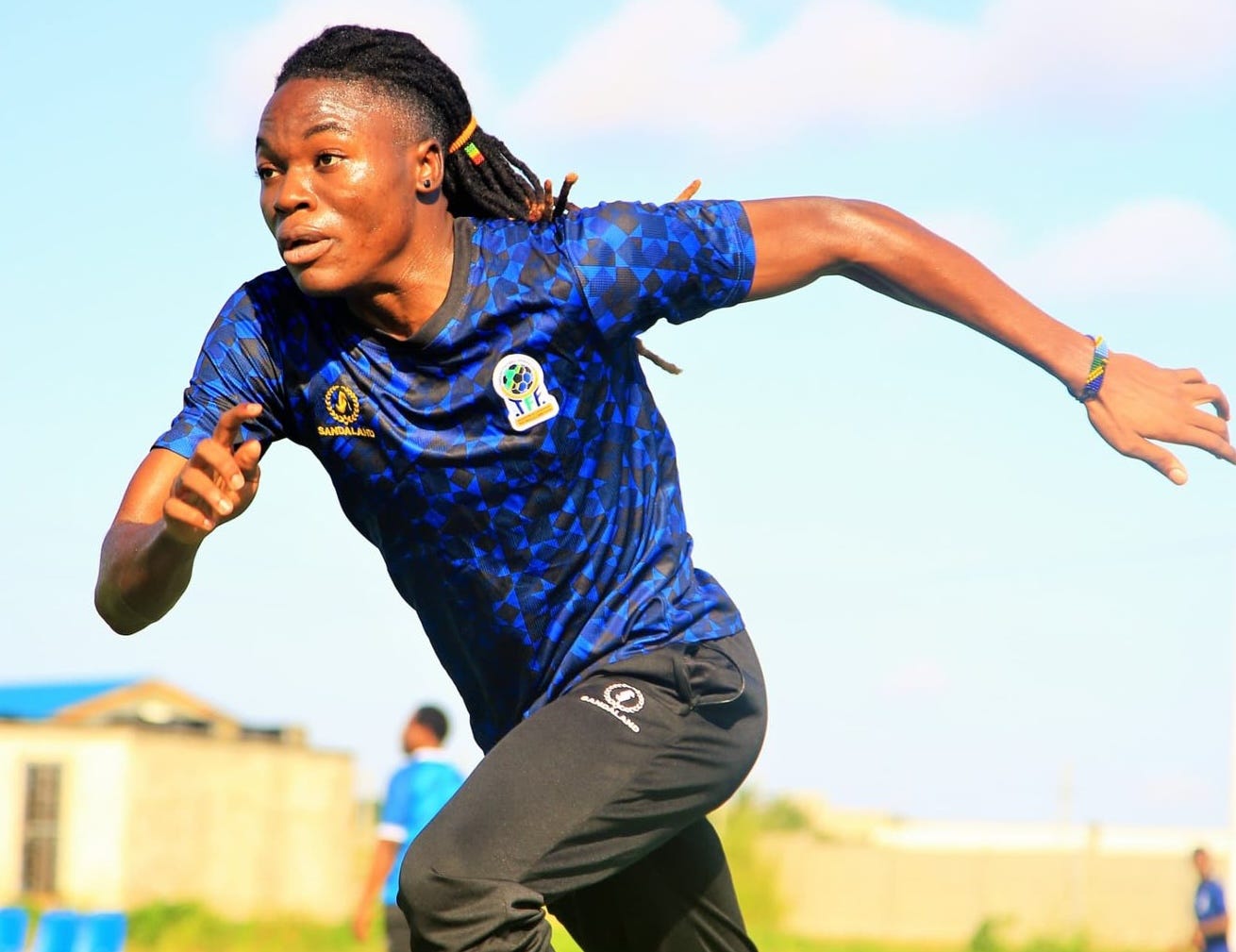The ultimate 2024 Women's Africa Cup of Nations guide
Your one stop shop for everything Women's Africa Cup of Nations 2024
Three years on from the greatest showpiece women’s football has seen in Africa, we’re finally back. It’s a year late, and nearly didn’t happen, but it is set to be the most hotly contested WAFCON ever. But who are the favourites, who are the dark horses, and who are the ones you’ve never heard of that might just win you over?
If you want to understand why it’s being played a year late, you can find out here.
This is the most comprehensive WAFCON preview you will read and the only one you’ll need. Let’s get into it.
The tournament
Like the previous WAFCON, this a 12-team tournament. Two of the best placed third teams will go through and join the other six in the quarterfinals (a là the AFCON and men’s Euros).
Hosts Morocco kick off the tournament against Zambia in what is certainly the group of death. The two sides will be joined by Senegal, who reached the World Cup playoff qualifying tournament, narrowly losing to Portugal. Making up Group A are DRC, returning to the competition after a 13 year hiatus. They are a team backed by a core of TP Mazembe players who won last seasons CAF Women’s Champions League and are not to be taken lightly.
In Group B Nigeria are joined by North African sides Tunisia and Algeria. With women’s football in North Africa being prioritised in a way that it never has been before, combined with the professionalisation of the Saudi Women’s League where many North African players are now based, both teams have made serious improvements in recent years. The group is rounded off by Botswana who lost to Morocco in the quarter finals three years ago.
Group C is headlined by champions South Africa who take on former heavyweights Ghana, who themselves are looking for redemption after seven years away. Mali make their return to the competition, having made the semi finals in 2018 but failed to qualify for the 2022 edition. The group is finished by relative minnows Tanzania who are the sole representatives from East Africa.
With the tournament being 12 teams there is a quirk to progression in that certain groups are better than others. The winners of group A and C will play the best third placed teams while first in group B will face the second place team in Group A. With that in mind it looks likely that either Morocco or Zambia will potentially play against Nigeria in the quarter finals in a blockbuster.
The favourites
Morocco
Hosts Morocco come into the tournament off the back of one of the greatest football revolutions in the sport’s history.
When they hosted the opening game of the 2022 edition, it was their first appearance at the competition since 1998. The Atlas Lionesses only started playing football in 1997 and the kingdom only began taking women’s football seriously in 2017.
But when the government began investing in the women’s game in 2020, turning the top two divisions professional, they had no idea how quickly this team would rise to the pinnacle of African football.
Their 2022 squad was almost entirely built of players from ASFAR Rabat, who had dominated domestic football for a decade and had reached the semi finals of the inaugural CAF Champions League the season prior.
They shocked the African footballing ecosystem, winning their group before beating Nigeria in the semi finals on a famous night. They lost to South Africa in the final but had firmly announced themselves to world football and qualified for the World Cup.
In Australia they would get off to a rough start in their debut World Cup, being thrashed 6-0 by Germany. But they beat South Korea 1-0, who then did the Africans a favour by drawing with Germany, allowing for Morocco to come second in the group after another 1-0 they edged past a Columbia side who themselves had beaten Germany.
Despite a 4-0 thrashing from France in the knockouts, the Atlas Lionesses could walk away with their heads held high, having won two games and reached the knockouts in their first ever World Cup appearance.
Since then, the Lionesses have only improved. The Moroccan women’s league has strengthened with teams like Sporting Casablanca and Wydad Casablanca improving to create a more competitive domestic environment.
Coming into this tournament they are the best resourced side taking part. While most of the other countries competing for the trophy have been dogged with issues around payments and federations that don’t take their women’s football seriously, Morocco is the opposite.
The investment into club football and international football is incredible with 42 clubs (14 in the first division and 28 in the second division) being subsidised to the tune of up to $120,000 a year as well as being provided with training facilities, team buses, equipment, clothes and staff.
The national team trains in the Mohamed VI Football Complex, once described by former England youth international and full Moroccan international Rosella Ayane as, “St George’s Park, but with palm trees.”
The complex has four five-star hotels, eight pristine pitches, one of them indoor, and climate controlled, futsal and beach soccer pitches, an Olympic-size swimming pool as well as a sports hospital with every form of rehabilitation and sports science equipment ranging from cryotherapy chambers to an isokinetic lab.
This team has all the infrastructure and support to win a first ever WAFCON, they just need to go and do it on the pitch.
The Squad
Most of the squad that won over the hearts and minds of Moroccan fans in 2022 still make up the bulk of the team. Khadija Er-Rmichi was once a liability of a goalkeeper, making the costly mistake that saw the Lionesses fail to qualify for the 2020 WAFCON. But since then, she has developed into one of the most reliable keepers on the continent. The defence remains much the same and is headlined by Nouhaila Benzina who made headlines at the World Cup as the first player in history to wear hijab at a World Cup.
Spanish born Yasmin Mrabet has traditionally been at the heart of the defence but has of late been playing in midfield alongside Elodie Nakkach, but it’s the front of this side where the magic happens.
Captain, leader and legend Ghizlane Chebbak will most likely reprise her position as the creative heartbeat of this team. A classy playmaker and dead ball specialist, Chebbak is at the heart of everything good in this team. She is flanked by the talented and mercurial wingers Fatima Tagnaout and Sakina Ouzraoui Diki.
Up front is where this side has improved the most though and that is thanks to Ibtissam Jraïdi. After years of smashing every goalscoring record possible in Moroccan club football, she made the move to Saudi Arabia where she has continued that ludicrous goal scoring record at Al Ahli. She has been the top scorer in the league for the past two seasons.
Zambia
Five years ago, the furthest the Copper Queens had reached in any football competition was the group stage of the WAFCON. In the last five years, they have played at two Olympics, won a match at their debut World Cup and won bronze at the WAFCON.
They are the youngest of the “big four” and are by far the most exciting to watch. While they can score goals en masse, they can concede even more. Perhaps best demonstrated in their 6-5 loss to Australia at the Paris Olympics.
They’ve also had their fair share of issues at home. The coach that led this revolution, Bruce Mwape, was sacked last year after allegations of sexual misconduct arose. Alongside his dismissal was the arrest of FA president Andrew Kamanga over financial misconduct.
With Mwape’s dismissal, Copper Queens turned to Nora Häuptle, the Swiss tactician who masterminded Ghana’s return to the WAFCON after a seven year hiatus. But earlier this year, she admitted that she hadn’t been paid up to four months wages. The new FAZ president Keith Mweemba blamed this on the previous administration and has claimed that it has been sorted.
Despite these challenges, the Copper Queens have thrived, knocking out both Ghana and Morocco on their way to the Olympics and have returned to the WAFCON with a far stronger side.
The Squad
The obvious superstar of this team is Barbra Banda. One of the best players in the world, she was on the NWSL team of the season last season and scored the winning goal as the Orlando Pride won their first ever title. Arguably the best striker in world football since she burst onto the scene by scoring two hattricks at the 2020 Tokyo Olympics, she has only improved.
Alongside her is Rachel Kundananji who plays on the other side of the US for Bay City FC. In a similar mould to her strike partner, Kundananji is one of the most mobile forwards around and a terrific finisher. She also was the most expensive football player in history when she signed for Bay City. Not a bad front two.
But this is not a two-women team. In fact, both players missed the last WAFCON in a gender verification scandal that ruled them both out of the tournament (let’s be clear, there was no basis to stop them play). Without them, the team was powered forward by the mobile no. 10 Grace Chanda who has since signed for Orlando Pride herself alongside fellow forward Prisca Chilufya. With one of the fastest wingers in town in Xiomara Mapepa and 18-year-old Fridah Mukomais on loan from Kansas City Current to Beijing Jingtan in China where she averages a goal-a-game, Zambia have one of the best attacks in world football.
It's behind them where the team struggles. Evarine Susan Katongo and Irene Lungu are combative midfielders and in Lushomo Mweemba and Martha Tembo they have a solid servants at the back, but this is probably the most top-heavy football team in the world. They make the men’s Real Madrid team look perfectly balanced.
Nigeria
The queens of Africa, nine times champions (out of 12) the Super Falcons of Nigeria are the most dominant national team in women’s football. That domination started waning in late 2010s when South Africa emerged as genuine challengers. In 2018, Nigeria got the best of Banyana Banyana in the final on penalties, but they were supremely outplayed, and the final veneer of invincibility was chipped away.
That aura was destroyed at the last WAFCON. Drawn in a group with their southern rivals, Nigeria lost in their opening game 1-0 before losing in that famous semi-final against hosts Morocco where the Super Falcons lost not one, but two players to red cards. They bravely fought on but succumbed to the Moroccan pressure on penalties.
But if anyone thought that this team was done, the 2023 World Cup reminded us that this is still the only African side that has continuously competed with the best in the world. They drew with Canada before shocking hosts Australia in a thrilling 3-2 win. They went unbeaten in the group before dominating European champions England in the Round of 16. England were reduced to 10 players when Lauren James stamped on Michelle Alozie, giving us one of the most iconic photos in World Cup history. But the Three Lions held out to win on penalties and reach the final.
Since then, it hasn’t been a great time for the Super Falcons.
They initially wanted to sack coach Randy Waldrum after he did an interview with myself in which he revealed that he hadn’t been paid his salary for 14 months. Unfortunately for the Nigerian Federation, Waldrum did such a good job that they couldn’t sack him. But with that relationship soured it was a poisonous environment.
The players themselves had to get the help with international players union FIFPRO to make sure that they were paid their bonuses for the World Cup.
Having boycotted training ahead of the 3rd place playoff at the 2022 WAFCON over unpaid bonuses, hopes were that the NFF would have dealt with this ahead of this tournament. Unfortunately, that has not been the case, and the team heads in the 2024 WAFCON still being owed money from their employers.
Head coach Justin Madugu was hired after Randy Waldrum, as an interim coach but he has kept the job. He was Waldrum’s assistant and has been a part of the Nigerian set up for over a decade. However, critics say he has been hired not for his tactical acumen, but because he is a company man, is cheaper than a foreign coach, and will not make complaints about whether or not he is being paid on time.
The Squad
Despite the challenges off the pitch, on the pitch, this team is still the strongest around. Goalkeeper Chiamaka Nnadozie was arguably the best keeper at the World Cup and for Paris FC, she was equally excellent. Fans of Arsenal will remember her nervously with the memories of her saving two penalties against the Gunners when Paris FC knocked them out of the Champions League qualifiers in 2023. Ahead of the tournament she has made the move across the Channel, signing with Brighton & Hove Albion.
Ashleigh Plumptre, Osinache Ohale, Oluwatosin Demehin and Michelle Alozie are an experienced back four that stand up against the very best around the world. In front of them Halimatu Ayinde provides a physical shield while Deborah Abiodum provides the guile. While we’re not sure how they will line up in the midfield and attack they have options. Captain Rasheedat Ajibade can play centrally or out wide and brings a terrific blend of silky smoothness and physicality, think Paul Pogba.
But the undisputable superstar of this team and the face of African football still is Asisat Oshola. After being the forward for the best club side in the world, Barcelona, for over five years in which she notched over 100 goals, she made the move to the NWSL. She now lines up alongside Kundananji at Bay City, and while she has struggled with injuries over the last few years, she comes into this tournament hungry for revenge.
South Africa
In 2022 there was a sense of inevitability about Banyana Banyana. From the first game of the tournament when they beat Nigeria, they looked destined to finally win the tournament that had been eluding them ever since they reached the final in 2000. Even when they stumbled and laboured against fellow Tunisia and Zambia in the knockouts, they looked unflustered.
And in the sweltering cauldron that is the Stade Moulay Abdellah, where Nigeria had crumbled, Banyana Banyana stood strong. A brace from Hildah Magaia set them on their way and they never looked in too much trouble, even after Morocco pulled one back late on.
Since then, it has been a bumpy ride. The team went on strike ahead of the 2023 World Cup when they were meant to play a pre-tournament friendly against Botswana. The stadium they were given to use was in such a bad state that the Premier Soccer League, the men’s first division, said that it was unfit to play on. Instead of listening to the players demands, the South African Football Federation selected another group of players, none of whom were even professionals, to play a sham of a game before barring the actual players from entering the pitch.
But at that World Cup, like their African counterparts, South Africa defied expectations and got out of a tough group with Sweden, Italy and Argentina. That late win against Italy where Thembi Kgatlana scored a 92nd minute winner will live long in the memory.
But sadly, it has been a tough road since. Banyana Banyana were knocked out of Olympic qualifying by Nigeria, and they too have not been paid wages for previous international camps.
This last season the Women’s Super League in South Africa has been a stop-start league, with entire game weeks being cancelled or only just a single match being played as SAFA failed to negotiate deals with sponsors.
What is even worse is that coach Desiree Ellis, the greatest coach in South African history and one of the legends of the game, hasn’t been paid either. In fact, her contract that expired in December has not been renewed. She enters her title defence this weekend without a contract from the federation.
It is an appalling treatment of someone who has given more to the game in South Africa than any other. This is a woman who played illegally during Apartheid, was a part of the first ever women’s team after the fall of apartheid, was once sacked from her day job because of playing for her country and has since as a coach led the team to two WAFCON finals, two World Cups, bringing about the golden age of women’s football in South Africa.
The squad
The big news out of the South Africa camp ahead of the tournament was that superstar Thembi Kgatlana would miss out on the tournament because of “personal reasons”.
It’s a huge blow to the team. Not only was she their talisman at the World Cup but she scored and gave England a torrid time when the two sides met in a friendly at the end of last year. Leah Williamson is probably still having nightmares about Kgatlana.
But her loss is not one the team can’t overcome. In fact, she missed the knockouts of the last WAFCON when she ruptured her achillies tendon in the group stage.
In her place, the pair of Jermaine Seoposenwe and Hildah Magaia will have to step up, like they did last time. Around them will likely be Linda Mothlalo of Glasgow City FC, an ethereal playmaker who often gets in on the goals as well as Noxolo Cesane, a small, tricky winger.
Former AC Milan player Refiloe Jane is arguably the most important player to this team, holding down the midfield while also possessing a lovely passing range. While centurions Janine van Wyk and Noko Matlou have retired Bambanani Mbane is the stalwart of this defence with pacey fullbacks like Lebohang Ramalepe and Bongeka Gamede providing both width and technique.
Dark horses
While there is a very clear four favourites at this tournament, with it only being 12 teams and Nigeria likely playing either Morocco or Zambia it really is anyone’s game.
One team that will fancy themselves to compete with the other four is Ghana. The Black Queens were once the main rival to Nigeria, constantly running the Super Falcons in the most iconic of African rivalries.
But in 2018, when they were hosting the tournament and had expectations of winning the competition, they fell apart spectacularly. They failed to get out of the group stage, losing to Mali and drawing with Cameroon.
After that defeat, investment and interest in the team flagged. Then followed a number of years of stagnation, in part thanks to COVID, but Ghana had the tremendous misfortune of being drawn against Nigeria in the qualifiers for the 2022 WAFCON. Needless to say, they didn’t make it.
With the WAFCON prior to the World Cup also doubling as a qualifier for the world’s greatest showpiece, Ghana not only missed out on a chance to redeem themselves on the continent but also a chance to qualify for the World Cup.
They have rebuilt in the last couple years, thanks in large part to the brilliant work of Nora Häuptle. The Swiss coach was initially hired as a technical director before taking on the coaching job. She led the on a ten game unbeaten run (the first nine of which they didn’t even concede a goal). Häuptle led them back to the WAFCON and only lost the Zambia in Olympics qualifiers thanks to a 96th winner from Banda.
But with this WAFCON being delayed and Häuptle’s contract running out at the end of the year, she decided to leave the Black Queens and take on the Zambia job.
Ghana have looked abroad for her replacement, bringing in former NWSL side Racing Louisville coach Kim Björkegren. He has had an indifferent time as coach so far and will only make his competitive debut in their opener against South Africa.
This is almost an entirely new team from the one that was humiliated in 2018 and has some talent. Doris Boaduwaa has been one of the most exciting young players on the continent. Boaduwaa and Evelynn Badu both thrilled in the inaugural CAF Women’s Champions League in 2021 when they took Ghanaian side Hasacaas Ladies to the final.
They are backed up by NWSL stars in Stella Nyamekye and Princess Marfo. But the heartbeat of this team is Grace Asantewaa. The midfielder plying her trade for FC Juarez in Mexico is both a dynamic battler and silky technician.
With a more generous draw in their group, even if Ghana lose to South Africa in their opener, they will avoid any of the other big teams until the semi finals and from there, who knows?
The underdogs
Probably the team with the least pedigree coming into the tournament, Tanzania haven’t reached the WAFCON since their debut in 2010. But don’t sleep on them.
Women’s football in Tanzania has come on in leaps and bounds in the last three or four years, thanks in large part to the level of investment from Tanzania’s club giants Simba SC and Young Africans SC (Yanga).
Never to be outdone by the other, when the two sides began women’s teams a couple years ago, they both put more money behind the teams than anywhere else in East and Central Africa, attracting coaches and players from around the continent.
This investment, coupled with the Tanzanian federation investing into youth football has led to a talented crop of young players. Much of the team is the same side that qualified for the FIFA U-17 World Cup in 2022 where the Tanzanians shocked the world by reaching the semi finals, knocking out giants France and Canada en route.
There are a few talented players on this team like Opa Clement and Brighton forward Aisha Masaka (who will sadly miss the tournament through injury), but there is one name from this team you will hear a lot more about in the future, that is Clara Luvanga.
Luvanga was the leader of that U-17 team and is on a rapid trajectory to the top. At just 20, she already made the move from Tanzania to Spain before moving to Saudi Arabia where she won the Saudi Women’s League with Al Nassr. Capable of playing anywhere in attack she is a terrific talent and is also rapid. She ended the season only behind Morocco’s Jraïdi in the goal scoring charts and might make another statement at this year’s WAFCON.




